2018 Subaru Outback review: solid performer gains more tech and a premium feel
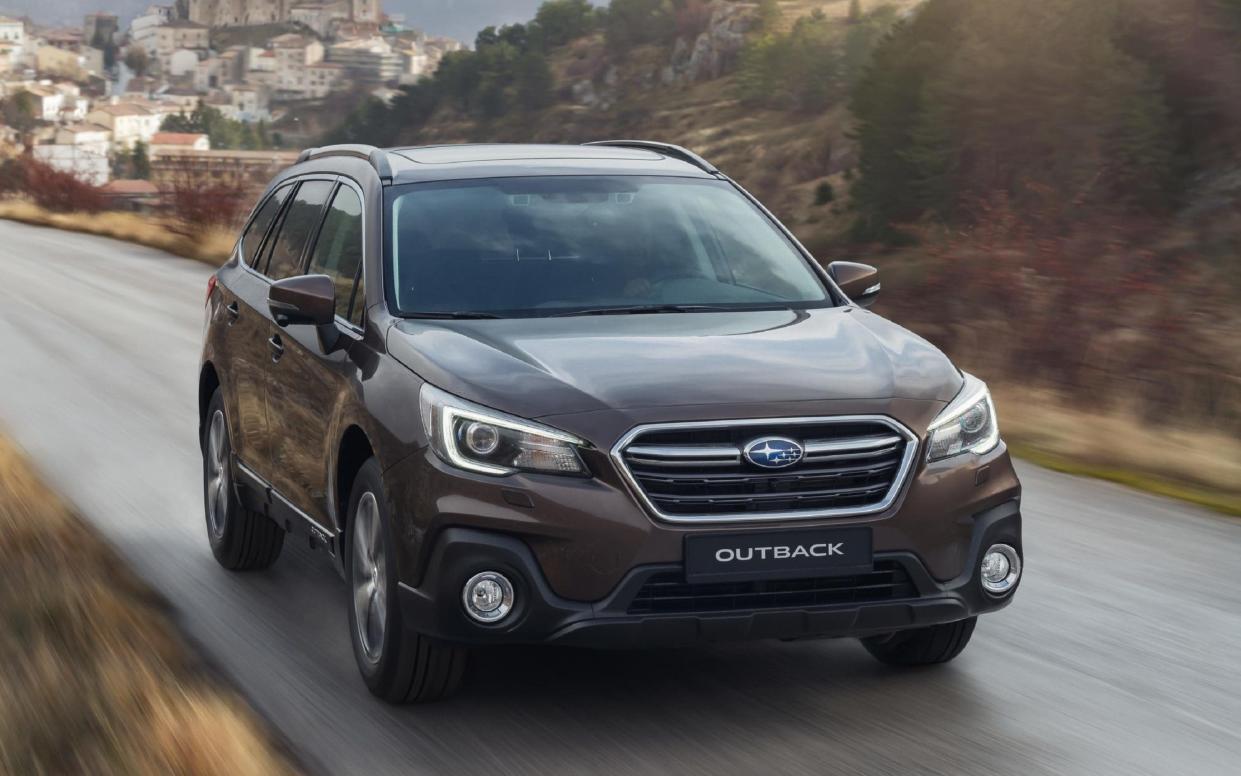
While the definition of what constitutes a crossover in automotive terms varies depending on who you are talking to, one commonality is that they all involve an SUV of some description.
The Qashqai and its ilk are crossovers because they combine SUV styling with hatchback running costs; the BMW X6 is a crossover because it’s the size of an SUV but has the styling (ahem) of a coupé; and the Subaru Outback is a crossover because it marries SUV capability with estate car aesthetics and space.
In that sense the Outback is of the same pedigree as a Volvo Cross Country, Audi Allroad, Skoda Scout or Volkswagen Allroad, albeit with more history on its side. For it was in 1994, three years before Volvo launched the XC70 as its first jacked-up estate, that the first Outback went on sale. Back then it was an extension of the Subaru Legacy range, but in 2014 the Legacy named was dropped (outside of Japan at least), leaving the car you see here as the flagship model in Subaru’s range.
To bring that tale fully up to date, earlier this year Subaru rolled out a range of small changes for the Outback in a bid to keep things fresh. Externally these consist of a new grille, bumpers, wing mirrors and headlights, the latter now swivelling as you turn the steering wheel to aid visibility.
As well as it’s slightly different appearance that grille also now houses a 180-degree camera, which feeds an image on to the car’s touchscreen of the road ahead, which is ideal for avoiding obstacles off-road, or simply makes it easier to slot the car into a supermarket parking space. There’s another camera mounted on the underside of the passenger-side wing mirrors too, plus one on the boot for reversing, and you can cycle through the various possible views using a button mounted next to the gear lever.
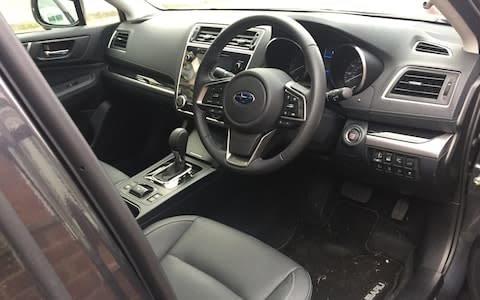
Equipment levels have also improved for 2018, with Lane Keep Assist now coming as standard and forming part of Subaru’s Eyesight safety package. This bundles together the expected range of autonomous emergency braking, adaptive cruise control and lane departure warning with a couple of other potentially useful features, such as an alert when the stationary vehicle in front moves away while sitting in traffic.
Then there’s Pre-Collision Throttle Management, which prevents the car from moving forwards if there’s a solid object in front. It’s designed to prevent a crash if a driver selects drive instead of reverse, and while it falls firmly into the category of being one of those things you hopefully never have to use, it’s far from a bad idea.
Inside, the touchscreen in the top-spec SE Premium model has grown in size from 7 inches to 8 (on SE models it’s 6.5 inches), and it now features Apple CarPlay and Android Auto along with the satnav and a DAB radio (about time too). It’s a good system rather than a great one, with plenty of features but a sometimes fiddly interface.
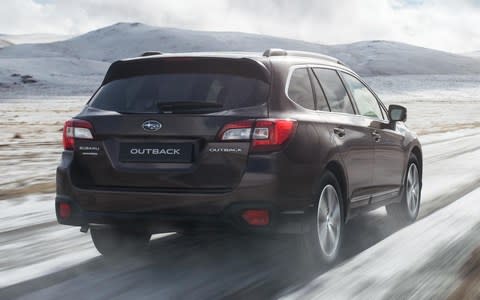
In order to add more of a premium feel there’s also now some double stitching across the dash, even more gloss black panelling, plus silver surrounds for the air vents, touchscreen and heater panel. Admittedly it’s still someway off the tactility of an Audi, Volvo or Volkswagen, but the gap is slowly closing and in fairness the Subaru does feel built to last a lifetime.
The engine line-up remains as before, so there’s a 2.0-litre diesel or a 2.5 petrol. The former can be had with a manual or automatic gearbox, while the latter comes with Subaru’s Lineartronic auto only. The model tested here is a petrol automatic in SE Premium spec, which comes in at £33,010 and starts with a satisfying off-beat throb to remind you that Subarus are just that little bit different from anything else.
That price, by the way, is unchanged to that of the pre-2018 Outback, making it about £3,000 cheaper than a VW Passat Alltrack, and a whole £10,000 less than a Volvo V90 Cross Country. Go for a diesel SE with a manual gearbox and the price drops again to £29,995.

Mind you, with only 175bhp from the naturally aspirated flat-four boxer engine the petrol Outback is certainly no performance car, taking 10.2 seconds to get from 0-62mph and never feeling anything other than leisurely in the way it accelerates. Admittedly, maximum attack driving has never really been the point of the Outback (Subaru has the WRX STI for that), but even so it does feel like it needs to be worked harder than you might expect of a £30,000 car.
Where the Outback does excel is in its all-weather capability, for which you can thank a combination of Subaru’s (permanent) symmetrical all-wheel-drive system, the low centre of gravity afforded by the engine design, and the smooth response of the automatic gearbox. Throw in Subaru’s reputation for building supremely reliable vehicles and it’s not hard to see why the Outback et al tend to be popular with those who live in remote locations, where you absolutely have to be able to trust your car will perform in the toughest of conditions.
A useful 560-litre boot, lots of rear passenger space and extremely comfortable seats also add to this car’s appeal, but the unresolved ride is more of a problem. At low speeds it tends to send thumps and shudders through the car, while travelling faster reveals a lack of body control that has the car leaning and pitching. On the motorway tyre noise can become intrusive too.
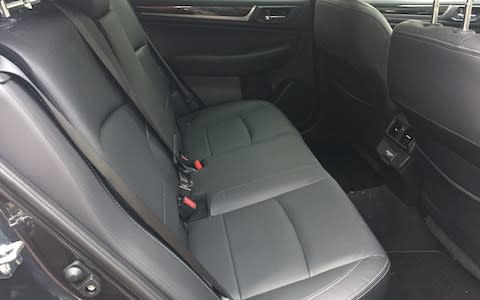
Ultimately you can get around a lot of this by driving more gently than you otherwise might, but that of course won’t add a great deal of appeal for a lot of people.
Nor will the fact that while the Outback is cheaper to buy outright than most of its direct rivals it does not hold on to its value anything like as well. This is turn means monthly finance costs don’t look terribly good, which combined with what is fairly average fuel economy will be enough to put many people off.
However, as a long term ownership proposition (as a lot of Subarus are) rather than something you plan to chop and change every couple of years, there is a lot to be said for this particular member of the increasingly varied crossover club.
THE FACTS
Subaru Legacy 2.5i SE Premium
TESTED 2,498cc four-cylinder ‘boxer’ petrol engine, Lineartronic CVT automatic gearbox, symmetrical all-wheel drive
PRICE ON SALE £33,010/now
POWER/TORQUE 173bhp @ 5,800rpm/173lb ft @ 4,000rpm
ACCELERATION 0-62mph in 10.2 seconds
TOP SPEED 123mph
FUEL ECONOMY 31.8mpg/38.7mpg (EU Urban/Combined). On test 31.2mpg
CO2 EMISSIONS 166g/km
VED £515 first year, then £140 per year
VERDICT While the 2018 updates don’t change the Outback dramatically, they do add extra appeal to what remains a solid long-term ownership proposition for those able to make use of its all-weather credentials. Just be aware that its rivals are fancier inside, more responsive to drive on the road, and generally cheaper when it comes to monthly finance costs.
TELEGRAPH RATING Three out of five stars
For tips and advice, visit our Advice section, or sign up to our newsletter here
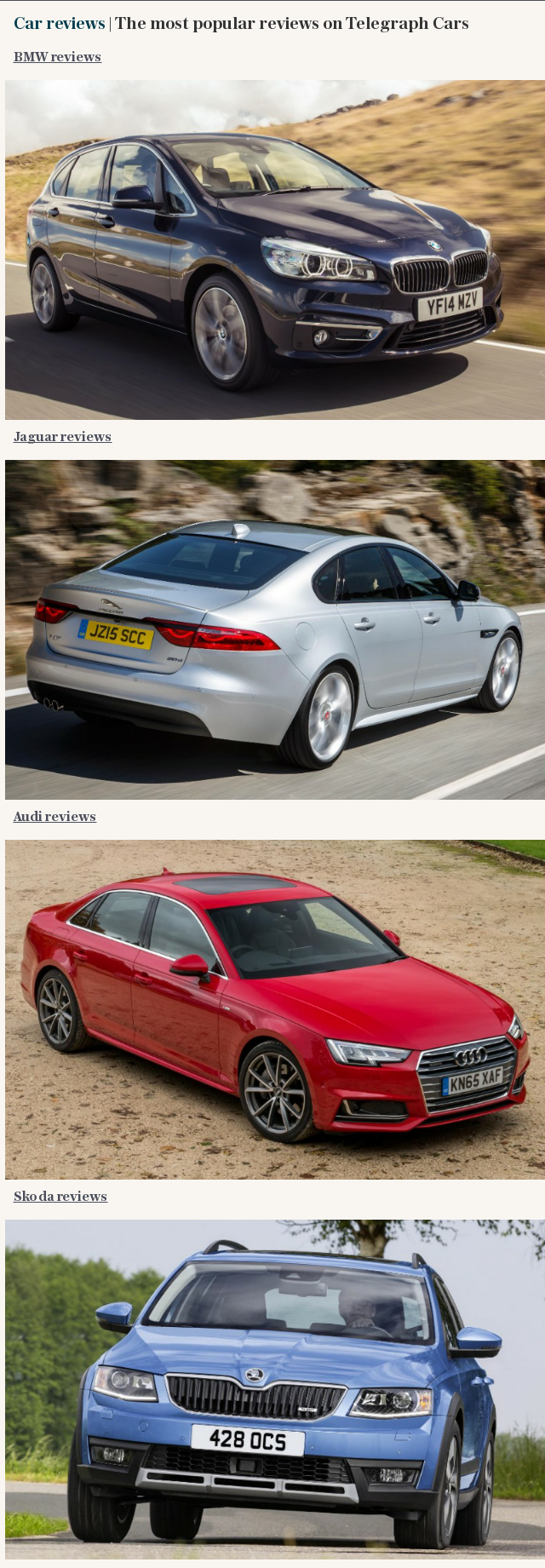

 Yahoo News
Yahoo News 
